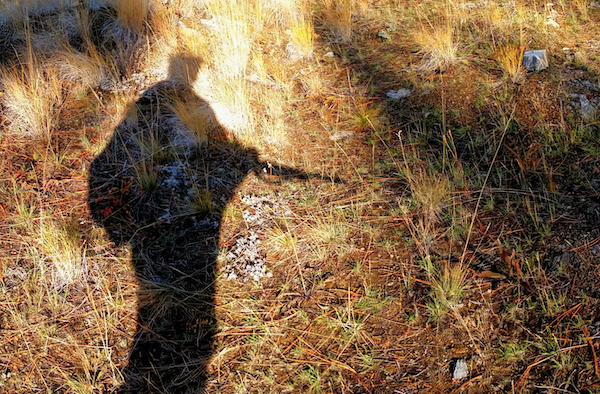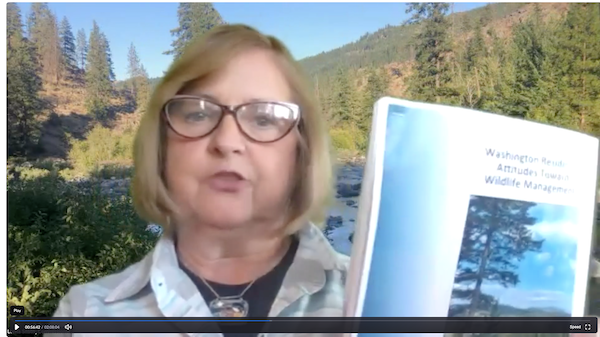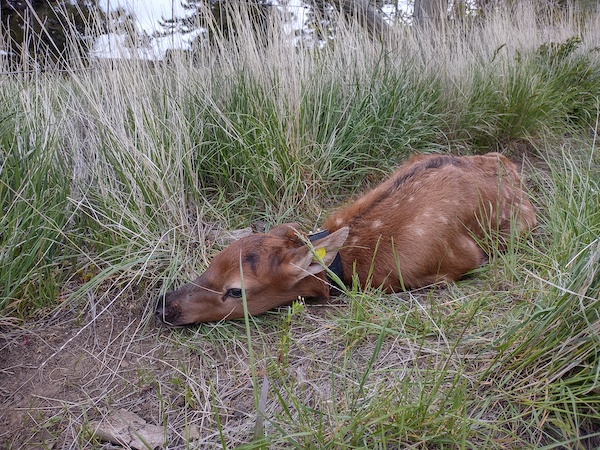
Survey Finds Continued Public Support For Hunting In Washington
Support for hunting remains strong in Washington and opposition to the traditional activity barely registers more than single digits, according to a public survey just released by WDFW.
It found that 75 percent of residents strongly (44 percent) or moderately approve of legal, regulated hunting, while 10 percent moderately or strongly (5 percent) disapprove.

That said, there was a dropoff from the 88 percent support for hunting found in 2014 (and 82 percent in two previous surveys), though notably there was not a corresponding rise in opposition. Rather, the number of people who answered that they neither supported or opposed hunting more than doubled to 16 percent from eight years ago, while the percentage who didn’t know stayed the same, 6 percent.
WDFW Wildlife Program and other staffers are now “analyzing” the results, according to spokesman Chase Gunnell.
(Also discussing it, members of the Hunting-Washington forum, where this reporter first stumbled across the final document posted to WDFW’s website.)
Gunnell said the agency expects “to incorporate findings into both internal and external communications in the weeks and months ahead.”
“This will also include consideration of a study on Washington hunters’ attitudes that was conducted in tandem with this survey of the broader public, and which we anticipate will be published soon,” he added.
The 2022 Washington Residents’ Attitudes Toward Wildlife Management is the latest in a series of public surveys that WDFW has commissioned from Responsive Management of Virginia over the years, with previous editions published in 2014, 2008 and 2002.
However, this latest one was the subject of a “gotcha,” per se, in late May when a pair of Fish and Wildlife Commission members unexpectedly produced a draft of it that WDFW brass said they and public affairs hadn’t seen.

Melanie Rowland and Lorna Smith were trying to use the survey to speak to trends they believed they saw and insert wider public perspectives into the update of the game management plan – the six-year guideline for hunting ungulates, predators, upland birds and migratory waterfowl in Washington.
The move left WDFW Director Kelly Susewind shaking his head, stating, “This is frustrating and embarrassing to me that we’re having this kind of conversation on a public call.”
Agency honchos said they might have still had questions they needed to ask Responsive Management’s Mark Duda and crew to clarify before the official release of the document.
As it stands, the survey was performed in early 2021 via online and telephone. A total of 965 residents 18 and older participated fully. Sampling error is 3.15 percent.
Fifty percent of respondents were female, 48 percent were male; 79 percent were white, 6 percent Hispanic or Latino, 3 percent black or African American; 27 percent considered themselves to live in a small city or town; 22 percent a rural area, 22 percent the suburbs and 17 percent from a large city.
Sixty-five percent identified as having hiked in the past two years, 56 percent as having viewed wildlife over the same time period, 44 percent had camped, 40 percent had boated, 36 percent had fished, 32 percent had taken outdoor-oriented photographs, 25 percent had biked and 11 percent had hunted.
Strong support for hunting dropped from 54 percent in 2014 to 44 percent, but moderate support held within the margin of error, 34 percent in the previous survey, 31 percent in the latest.
Besides support for hunting, part of the survey looked at predator management, with 80 percent supportive of maintaining sustainable populations, up from 70 percent in 2014, and 7 percent opposing.
But 58 percent also supported killing predators to protect threatened or endangered wildlife and a plurality of 48 percent supported using lethal control to protect deer, elk and moose herds while 30 percent did not.

In a narrow vote earlier this month, the Fish and Wildlife Commission approved allowing hunters to take a second cougar in the Blue Mountains, where the local elk herd has been officially designated as “at risk” due to high predation that is keeping the animals from rebounding to previous levels. Monitoring showed that of 125 calves captured and outfitted with GPS collars last spring, just nine survived to March, with 77 killed by predators and 55 of those by cougars.
The survey showed low support for killing black bears to prevent damage to private timberlands, just 19 percent, with 62 percent strongly or moderately opposed. Asked who should remove bruins gnawing on the trees to get at their sugary cambium layer, 36 percent said contracted professionals, 33 percent hunters and 7 percent the landowners themselves.
Results to many answers are broken down by sex, age, WDFW region of the state, white and nonwhite, and where respondents lived.
Strongest support for hunting was found in Kittitas and Yakima Counties and the Tri-Cities area – WDFW’s Region 3 – with 60 percent, followed closely by Okanogan and Chelan Counties and the western Columbia Basin – Region 2 – with 58 percent, while strongest disapproval, 7 percent, came from coastal counties and deep south Puget Sound – Region 6.
Other parts of the survey looked at WDFW’s management of wildlife conflicts. It found a “marked increase” in the percent of people having problems with coyotes, a highly adaptable mesocarnivore now “fairly frequently” seen in even Seattle.
(The adaptation of not just songdogs but other wildlife to urban environments was the subject of a fascinating article in a recent issue of National Geographic magazine; it appears they’re moving in with us.)
In 2014, 10 percent of people said they’d had a negative interaction with coyotes in the previous two years, but this latest survey found 20 percent had.
Other results from Responsive Management include:
• “A majority of residents (57%) rate WDFW’s management of negative human-wildlife interactions in the top half of the scale (19% excellent; 38% good), while 20% rate it in the bottom half (16% fair; 4% poor). A substantial percentage (23%) did not know what rating to give.
• “Nearly a fifth of residents (19%) have had one or more negative interactions with wild animals or birds within the past 2 years. Among those who had conflicts with wildlife, the species or species groups most commonly named as creating problems are raccoons (29% of those who had problems stated this), deer (24%), coyotes (20%), and rodents (12%).
• “Four potential reasons for having problems with wildlife were presented to those who had problems; the top reason selected by this group was that they live close to the wildlife’s habitat (47% of the group selected this), followed by unintentionally attracting the wildlife (40%) and that there are too many of them (31%). Only 3% of the group said that they intentionally attracted the wildlife.
• “Those who had problems with wildlife most commonly said that they resolved the situation themselves (44% of the group stated this); only 7% contacted WDFW.
• “Regardless of whether residents approve or disapprove of hunting in general, the survey presented six reasons for hunting and asked residents if they would support or oppose hunting for each. There is a clear divide in the results, with support for hunting to benefit wildlife considerably higher than support for hunting to benefit humans (although minimizing the spread of animal disease is beneficial to both wildlife and people). In the top tier, looking at strong and moderate support for hunting combined, are to control wildlife in a way that benefits other wildlife or habitats (79% strongly or moderately support hunting for this reason), to minimize the spread of animal disease (78%), and to reduce damage to habitat caused by overpopulation of wildlife (74%). In the bottom tier are hunting to control wildlife in a way that benefits people (55% on unrounded sums), to reduce animal-vehicle collisions (53%), and to address human-wildlife conflicts (52%).”
WDFW’s Gunnell said the agency welcomed survey results showing that two-thirds of Washington residents were either very or somewhat satisfied with the opportunities to enjoy the state’s fish and wildlife resources and just 9 percent were somewhat to very unsatisfied with them.
“We’re also glad to see findings showing strong participation in outdoor recreation, and that three fourths of Washingtonians approve of legal, regulated hunting in general; with 44 percent strongly approving,” he stated.
It will be interesting to see what hunters specifically think about issues surrounding the activity in Washington as practiced and managed circa the early 2020s and how it compares to past surveys.
Meanwhile, Marie Neumiller of the Inland Northwest Wildlife Council in Spokane keyed in on the rising number of people who have no opinion about hunting – from 3 percent in 2014 to 9 percent in 2022.
“That tells me the hunting community needs to do more outreach,” she told Spokesman-Review outdoor reporter Eli Francovich for a Sunday paper story.

